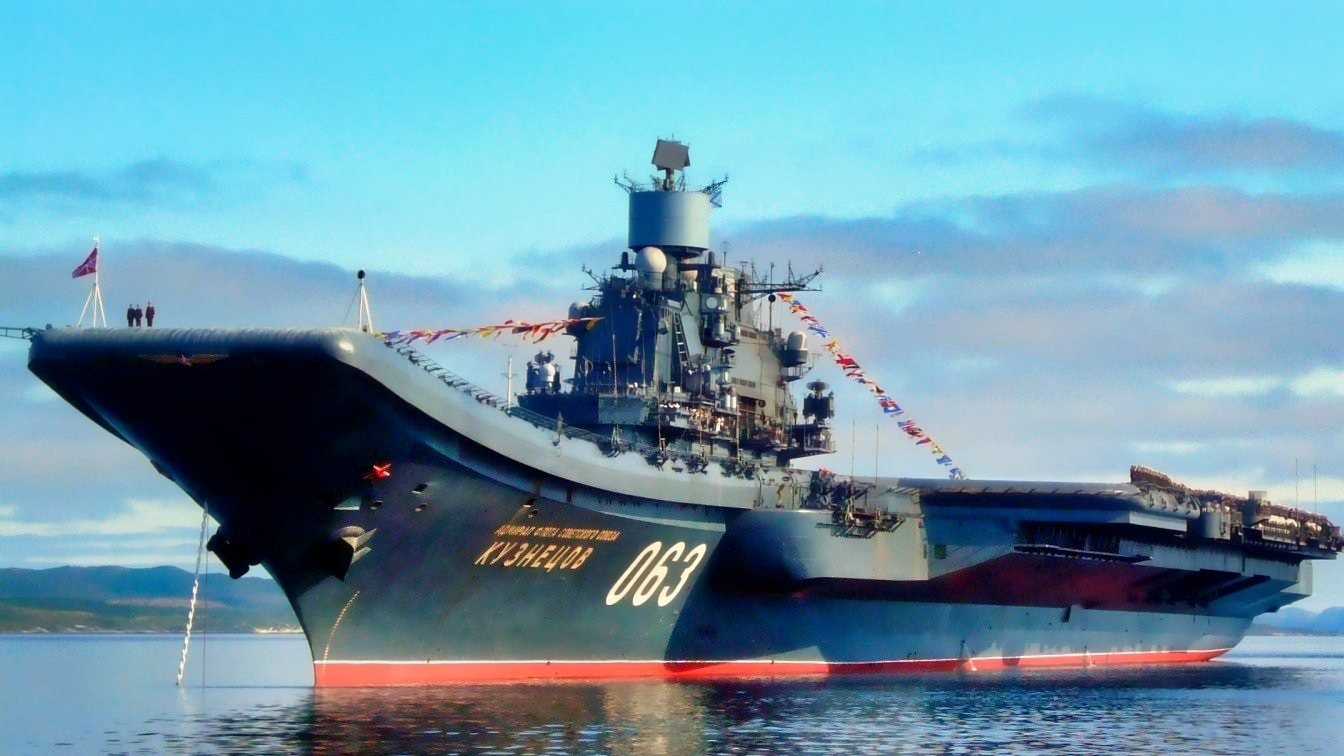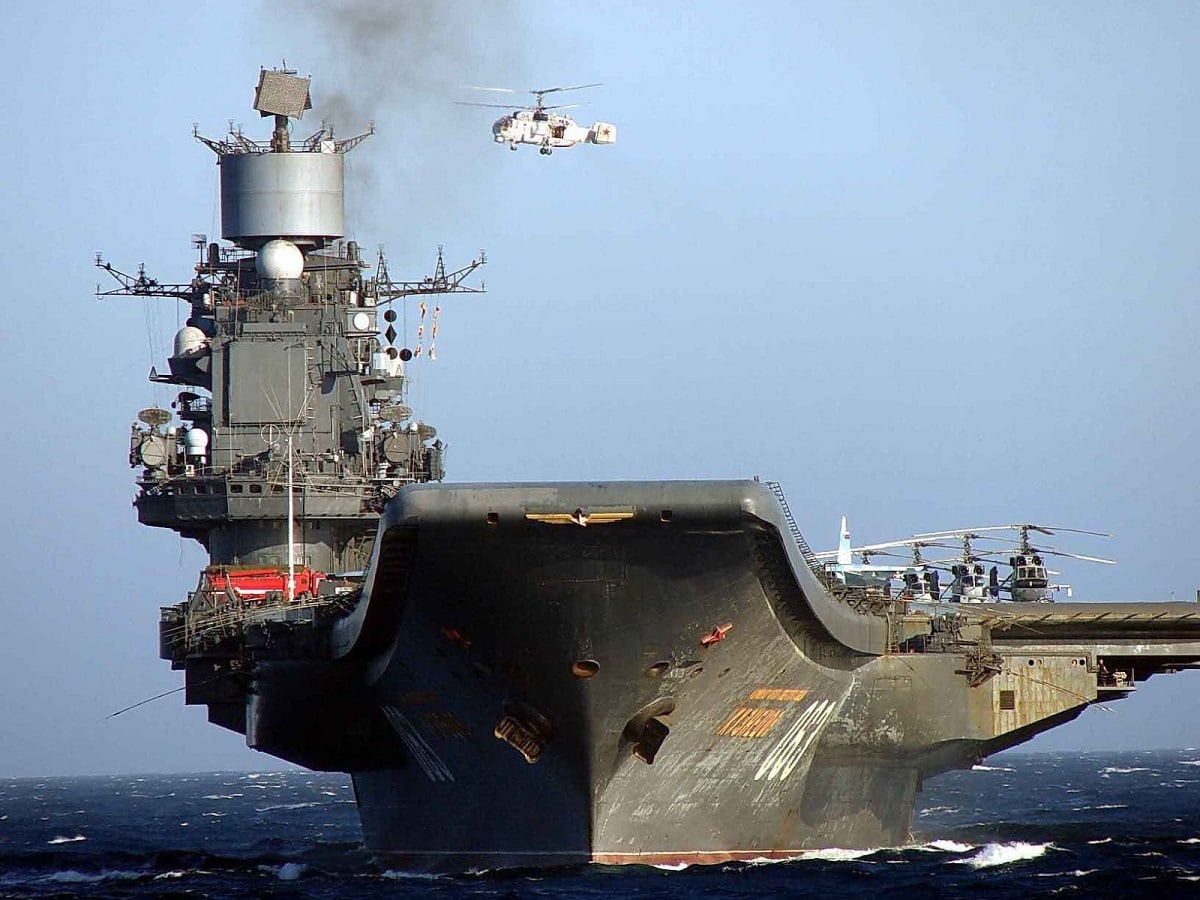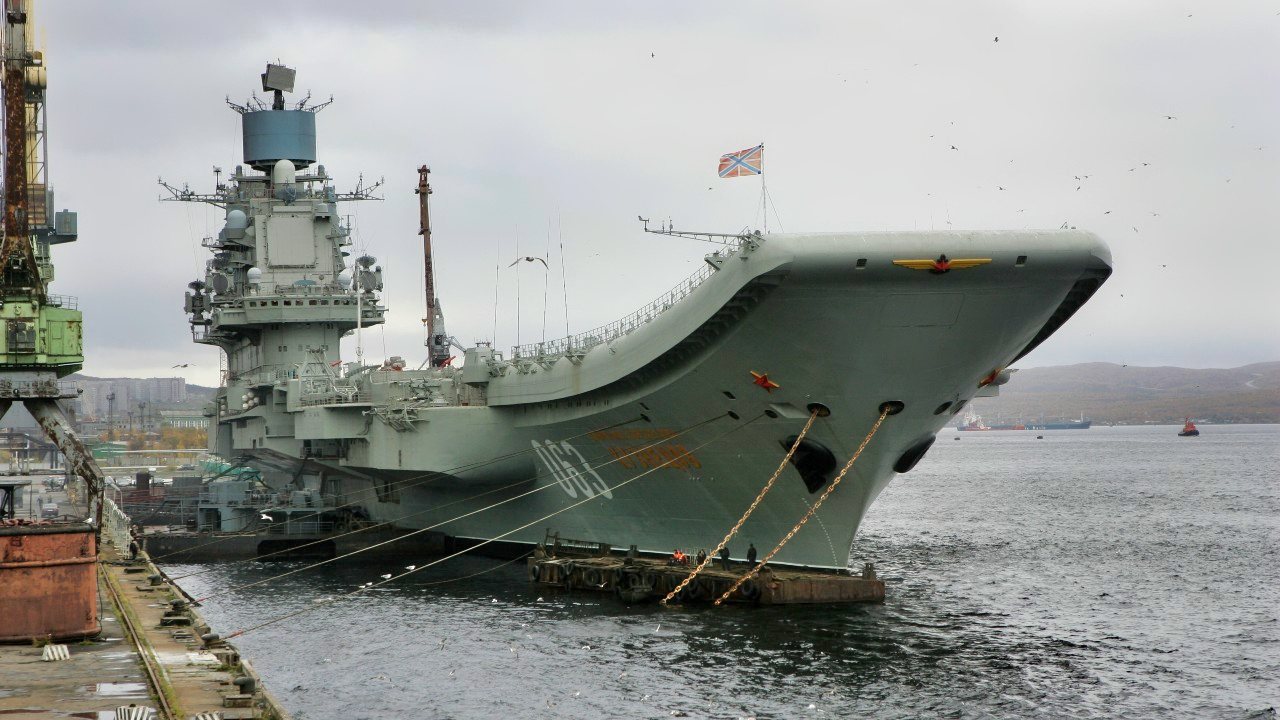Admiral Kuznetsov: Russia's Only Aircraft Carrier Comes Down to 2 Words
According to Moscow, Ukraine’s intelligence service attempted to sabotage Russia’s only aircraft carrier, Admiral Kuznetsov, in March by recruiting a crewmember to set incendiary devices on board. However, the plot failed when the crewmember reported the attempt to Russia’s FSB, which then turned him into a double agent, gathering intelligence on Ukrainian operations.
What You Need to Know: According to Moscow, Ukraine’s intelligence service attempted to sabotage Russia’s only aircraft carrier, Admiral Kuznetsov, in March by recruiting a crewmember to set incendiary devices on board. However, the plot failed when the crewmember reported the attempt to Russia’s FSB, which then turned him into a double agent, gathering intelligence on Ukrainian operations.

-The incident underscores the symbolic importance of the dilapidated Kuznetsov for Russia despite its outdated status, prompting Ukraine’s focus on the carrier as a target.
-Russia later deployed the Kuznetsov's crew to the Ukraine front, though the ship itself remains in drydock, likely far from true operational capability.
Ukraine Tried to Sabotage Russia’s Only Aircraft Carrier
Russia’s only aircraft carrier, the ancient Admiral Kuznetsov, has languished in port for years. But even before it was permanently consigned to floating in the safety of its homeport, the Admiral K was a global laughingstock; an awful sign to the world that Russia after the collapse of the Soviet Union and its defeat in the Cold War by the United States was no longer a great power.
Despite the fact that the Admiral Kuznetsov is a perennial reminder of the bad old days in Russia’s recent history, Moscow keeps the boat afloat. Because of its symbolic importance, though, it recently became a target of Ukrainian intelligence.
The Intelligence Operation: A Comedy of Errors
According to the public arm of Russia’s shadowy intelligence service, the FSB, the Russian security services foiled a plot by Ukraine’s military intelligence service to attack the Admiral Kuznetsov while it was in port. The FSB Public Relations Center claimed that way back in March of this year, the Ukrainian intelligence service attempted to recruit a crewmember of the Admiral Kuznetsov.
Under “psychological pressure” and financial inducements, the lowly Admiral K crewmember was promised rapid exfiltration from Russia by Ukraine to Finland if that crewmember set off incendiary devices onboard the dilapidated Russian boat.

The crewmember apparently alerted the Russian security services as soon as that individual was contacted with the offer from Ukrainian intelligence. Again, according to Russian government sources, the FSB then turned the targeted Admiral Kuznetsov crewmember into a double agent, who pretended to work for the Ukrainian intelligence service while soaking up all the information on other Russian-based Ukrainian operatives and operations.
Ultimately, this Admiral Kuznetsov crewmember working for the FSB supposedly gleaned from his Ukrainian handler that the “entire operation was personally supervised by the head of the Main Intelligence Directorate of the Ministry of Defense of Ukraine, Kyrylo Budanov.”
Needless to say, the attack did not occur as Ukraine had planned. But this incident highlights two things: first, despite it being a global embarrassment, the Admiral Kuznetsov continues to be a symbol of Russian power projection, which is why the Ukrainians wasted so much precious time and resources trying to sabotage the glorified garbage scowl.
Second, Ukraine continues to prove that it is both desperate to strike at Russian symbols of power and that, in its desperation, it is making major mistakes. Who knows what other, more important, intelligence the Russians were able to learn from this complex FSB operation.
Anyway, the operation from the Ukrainian perspective was a failure.

An End of an Era
Even though the crewmembers of the Admiral Kuznetsov apparently alerted the Russian security services as soon as he was contacted by the Ukrainian intelligence operative, Moscow still decided to send the crew of the ship to the frontlines in Ukraine shortly after that incident. The intelligence operation wrapped up around July of this year.
And the Admiral Kuznetsov has been removed from its port to a drydock facility. The Russian government insists the Admiral K will be restored to full operational capability and will be sent back to leech Mazut fuel across the world’s High Seas next year.
That is doubtful. What’s not doubted, though, is the special place that the Admiral K holds in the hearts of Russia’s leadership. That symbolic importance makes it a target even as it is kept far away from the world’s hotspots. It would seem this awful carrier brings out the worst in everyone.
Eventually, Moscow will have to end this miserable ship’s existence.
About the Author
Brandon J. Weichert, a National Interest national security analyst, is a former Congressional staffer and geopolitical analyst who is a contributor at The Washington Times, the Asia Times, and The-Pipeline. He is the author of Winning Space: How America Remains a Superpower, Biohacked: China’s Race to Control Life, and The Shadow War: Iran’s Quest for Supremacy. His next book, A Disaster of Our Own Making: How the West Lost Ukraine, is available for purchase wherever books are sold. Weichert can be followed via Twitter @WeTheBrandon.
Image Credit: Creative Commons and/or Shutterstock.


